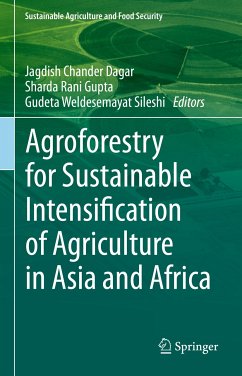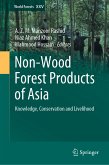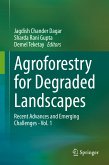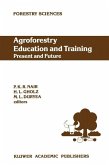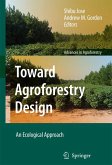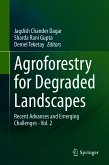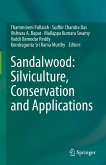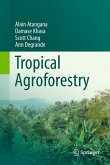Agroforestry for Sustainable Intensification of Agriculture in Asia and Africa (eBook, PDF)
Redaktion: Dagar, Jagdish Chander; Sileshi, Gudeta Weldesemayat; Gupta, Sharda Rani


Alle Infos zum eBook verschenken

Agroforestry for Sustainable Intensification of Agriculture in Asia and Africa (eBook, PDF)
Redaktion: Dagar, Jagdish Chander; Sileshi, Gudeta Weldesemayat; Gupta, Sharda Rani
- Format: PDF
- Merkliste
- Auf die Merkliste
- Bewerten Bewerten
- Teilen
- Produkt teilen
- Produkterinnerung
- Produkterinnerung

Hier können Sie sich einloggen

Bitte loggen Sie sich zunächst in Ihr Kundenkonto ein oder registrieren Sie sich bei bücher.de, um das eBook-Abo tolino select nutzen zu können.
This edited book opens up new vistas for sustainable intensification in agriculture to provide food to ever growing population as well as adapting to the risks of global environmental change. Diverting from conventional agriculture, the book explores new dimensions and concepts that have been identified for future research and development in sustaining agriculture in Asia and Africa regions. The chapters are written by leading researchers and practitioners in the field of agroforestry. The book demonstrates how agroforestry could be instrumental in bringing stability and sustainability in…mehr
- Geräte: PC
- ohne Kopierschutz
- eBook Hilfe
- Größe: 24.3MB
- -29%11
![Non-Wood Forest Products of Asia (eBook, PDF) Non-Wood Forest Products of Asia (eBook, PDF)]() Non-Wood Forest Products of Asia (eBook, PDF)129,95 €
Non-Wood Forest Products of Asia (eBook, PDF)129,95 € ![Agroforestry for Degraded Landscapes (eBook, PDF) Agroforestry for Degraded Landscapes (eBook, PDF)]() Agroforestry for Degraded Landscapes (eBook, PDF)161,95 €
Agroforestry for Degraded Landscapes (eBook, PDF)161,95 €![Agroforestry Education and Training: Present and Future (eBook, PDF) Agroforestry Education and Training: Present and Future (eBook, PDF)]() Agroforestry Education and Training: Present and Future (eBook, PDF)73,95 €
Agroforestry Education and Training: Present and Future (eBook, PDF)73,95 €![Toward Agroforestry Design (eBook, PDF) Toward Agroforestry Design (eBook, PDF)]() Toward Agroforestry Design (eBook, PDF)169,95 €
Toward Agroforestry Design (eBook, PDF)169,95 €![Agroforestry for Degraded Landscapes (eBook, PDF) Agroforestry for Degraded Landscapes (eBook, PDF)]() Agroforestry for Degraded Landscapes (eBook, PDF)161,95 €
Agroforestry for Degraded Landscapes (eBook, PDF)161,95 €![Sandalwood: Silviculture, Conservation and Applications (eBook, PDF) Sandalwood: Silviculture, Conservation and Applications (eBook, PDF)]() Sandalwood: Silviculture, Conservation and Applications (eBook, PDF)169,95 €
Sandalwood: Silviculture, Conservation and Applications (eBook, PDF)169,95 €![Tropical Agroforestry (eBook, PDF) Tropical Agroforestry (eBook, PDF)]() Alain AtanganaTropical Agroforestry (eBook, PDF)153,95 €
Alain AtanganaTropical Agroforestry (eBook, PDF)153,95 €-
-
-
Dieser Download kann aus rechtlichen Gründen nur mit Rechnungsadresse in A, B, BG, CY, CZ, D, DK, EW, E, FIN, F, GR, HR, H, IRL, I, LT, L, LR, M, NL, PL, P, R, S, SLO, SK ausgeliefert werden.
- Produktdetails
- Verlag: Springer Nature Singapore
- Seitenzahl: 816
- Erscheinungstermin: 19. April 2023
- Englisch
- ISBN-13: 9789811946028
- Artikelnr.: 67810614
- Verlag: Springer Nature Singapore
- Seitenzahl: 816
- Erscheinungstermin: 19. April 2023
- Englisch
- ISBN-13: 9789811946028
- Artikelnr.: 67810614
- Herstellerkennzeichnung Die Herstellerinformationen sind derzeit nicht verfügbar.
